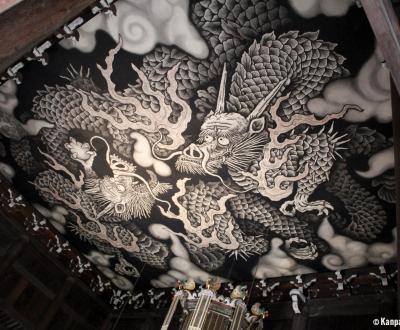Japanese Arts and History
Artistic Trends Through the Times
From archeological artefacts to hyper-modern skyscrapers, arts have long developed in Japan and reflect the country’s history.
Japan’s prehistory and ancient times (14,000 bc-538) are characterized by a specific pottery, whose first samples, among which the "cord-marked" potteries, date back to Jomon period. Earthenware in Yayoi period adopt a smoother aspect and in Kofun period the construction of monumental tombs was all the rage.
Classical Japan (538-1185) is the time of establishing the bases for the country’s institutions and culture. During Nara and Heian periods, the artistic production is thriving both in the religious field, with the creation of the first monumental Bouddha statues, and the secular culture, with the beginnings of poetry and literature.
Japanese Middle Age (1185-1600) is characterized by flourishing religious arts, in Buddhism and Shintoism as well, and the development of a warrior culture. The wonderful Himeji castle is a legacy of Azuchi-Momoyama period, when the first fortified castles were built.
The Edo period (1600-1868) is without a doubt the most famous one in Western countries. This long age of peace – but also seclusion - was governed by the last military lords, the shogun, and is considered the time of emergence of Japan’s national culture. Japanese etchings, or ukiyo-e ("images of the floating world") also developed during Edo period, and had a huge impact, alongside Japanese ceramics and lacquers, on Western arts in the 19th century.
With the restoration of the imperial system in 1868, Japan entered in its modern era (1868-1945). The country opened to the world for the better, with flourishing industrial and cultural exchanges, and for the worst, with an imperialist foreign policy that led to war.
Contemporary Japan (1945-today) is characterized by the great development of architecture, with construction structures of cutting-edge technologies and innovative shapes. The architect and urbanist Kenzo Tange (1913-2005) was one of its most famous representatives.
Today, Japan strives to protect its most precious heritage with the denominations of "National Treasure" and "Cultural Properties". Distinctive artworks can be admired in national museums, during a travel in the archipelago.

